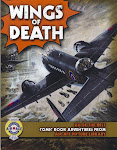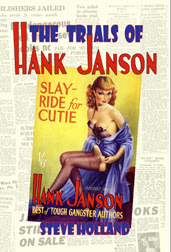 Arthur C. Clarke, science fiction author and science fact visionary, died at 1.30 am, 18 March 2008 at his home in Sri Lanka, aged 90.
Arthur C. Clarke, science fiction author and science fact visionary, died at 1.30 am, 18 March 2008 at his home in Sri Lanka, aged 90.Arthur Charles Clarke, born 16 December 1917 in Minehead, Somerset, sold an article entitled 'Extra-terrestrial Relays' in March 1945 to Wireless World (publiushed in October) in which he set out the principals for satellite communication by placing a series of satellites in geostationary orbit. That same month—March 1945—he wrote 'Rescue Party', which was sold to Astounding Science Fiction, appearing in May 1946; a second sale to Astounding, 'Loophole', became his first professional appearance, in April 1946.
 Clarke had joined the British Interplanetary Society in 1936 after moving to London to work as an auditor with HM Exchequer and had contributed to the BIS Bulletin and science fiction fanzines. In 1949 he became the assistant editor of Physics Abstracts and his first non-fiction book, Interplanetary Flight, appeared in 1950.
Clarke had joined the British Interplanetary Society in 1936 after moving to London to work as an auditor with HM Exchequer and had contributed to the BIS Bulletin and science fiction fanzines. In 1949 he became the assistant editor of Physics Abstracts and his first non-fiction book, Interplanetary Flight, appeared in 1950.A series of novels in the 1950s established his name firmly at the forefront of science fiction. He was never one of the genre's stylists but an ideas man producing, as Peter Nicholls once wrote, "optimistic propaganda for science." But within those bounds he produced a number of classics, including Against the Fall of Night (1953), Childhood's End (1953), Rendezvous with Rama (1972) and, Clarke's personal favourite, The Songs of Distant Earth (1986).
 His most famous work was 2001: A Space Odyssey (1968), which was developed from a short story entitled 'The Sentinel' (although it had originally appeared, in 10 Story Fantasy in 1951, as 'Sentinel of Eternity'). This was optioned by Stanley Kubrick who co-wrote the screenplay with Clarke which Clarke subsequently novelised. I always thought it ironic that Clarke—devoted to science and the benefits thereof—should be most famous for HAL, the killer computer, and the transcendence of Dave Bowman.
His most famous work was 2001: A Space Odyssey (1968), which was developed from a short story entitled 'The Sentinel' (although it had originally appeared, in 10 Story Fantasy in 1951, as 'Sentinel of Eternity'). This was optioned by Stanley Kubrick who co-wrote the screenplay with Clarke which Clarke subsequently novelised. I always thought it ironic that Clarke—devoted to science and the benefits thereof—should be most famous for HAL, the killer computer, and the transcendence of Dave Bowman.At 11 years old I became a huge fan of Clarke when his stories began appearing in Speed & Power magazine. I picked up issue 3, containing the first part of his story 'Into the Comet' and read every single issue after that, mostly for the stories by Clark and the illustrations by Michael Whittlesea. The fifth issue began an epic serialisation of 'A Meeting with Medusa' which was the cause of much frustration as Speed & Power only came out every fortnight; I was desperate to know how the story progressed and my local library had the story in a collection... but in the adult section of the library (and I only had a children's ticket). The kindly librarian (and I wish I could remember her name) upgraded me to an adult ticket which not only meant that I could take books out from the grown up's section but I could borrow four books at a time (rather than the stingy two you could get as a 'child'). I read just about every novel and short story collection Clark had produced that summer.
 I met him once. At Seacon '79, the World Science Fiction Convention held in Brighton, I was sitting in the audience for a talk by Greg Benford, who kept on glancing over at me. I was becoming quite self-conscious and it was only when the lecture had finished that I realised that Arthur had arrived in the hall and had sat down next to me. I wish I could say that something momentous happened but all I managed was "Can you sign my programme book?" Which he did... and was then whisked away by his friends.
I met him once. At Seacon '79, the World Science Fiction Convention held in Brighton, I was sitting in the audience for a talk by Greg Benford, who kept on glancing over at me. I was becoming quite self-conscious and it was only when the lecture had finished that I realised that Arthur had arrived in the hall and had sat down next to me. I wish I could say that something momentous happened but all I managed was "Can you sign my programme book?" Which he did... and was then whisked away by his friends. Clarke's connection to British comics is slight but will probably get a mention in most of his obituaries. One I noticed this morning (Daily Telegraph, 19 March 2008) mentions "In 1950 he advised the creators of the comic strip Dan Dare on technical matters."
Clarke's connection to British comics is slight but will probably get a mention in most of his obituaries. One I noticed this morning (Daily Telegraph, 19 March 2008) mentions "In 1950 he advised the creators of the comic strip Dan Dare on technical matters."Clarke was indeed hired as an adviser on the strip; however, his involvement has been exaggerated over the years. Neil McAleer, in Clarke's authorised biography Odyssey (London, Gollancz, 1992) says that Clarke was "science and plot adviser". Fred Clarke, Arthur's brother, has been quoted (in The Man Who Drew Tomorrow, p.84) as saying: "I know Arthur used to receive the Dan Dare strip regularly, for checking, but I don't think he ever found a mistake in it. In the end he suggested to Frank Hampson that as the standard of the work and research was so high, they were wasting their money getting him to check it, so from then on, Arthur had to buy Eagle for himself to keep up with what was happening."
Clarke himself would later say (in a letter to David Westaway published in Eagle Times): "I worked with Rev. Morris and Frank Hampson. I advised on science articles and Dan Dare plots. I think I invented the 'Therons'! But it's all so vague now..."
 According to Chad Varah, Clarke's involvement with the paper came about when his agents submitted some stories ('The Fires Within' by 'Charles Willis' appeared in Eagle vol.1 no.17, 4 August 1950, reprinting a story that had originally appeared in Fantasy in August 1947); Clarke's first book, Interplanetary Flight appeared in May 1950 so it is likely that Frank Hampson was aware of him at around the time a new writer, Guy Morgan, took over the writing of the Dan Dare strip to relieve some of the pressure on Hampson and his studio. To my mind, it seems likely that Clarke was brought on board at the same time to help plot the story and make sure that Morgan did not introduce anything scientifically implausible.
According to Chad Varah, Clarke's involvement with the paper came about when his agents submitted some stories ('The Fires Within' by 'Charles Willis' appeared in Eagle vol.1 no.17, 4 August 1950, reprinting a story that had originally appeared in Fantasy in August 1947); Clarke's first book, Interplanetary Flight appeared in May 1950 so it is likely that Frank Hampson was aware of him at around the time a new writer, Guy Morgan, took over the writing of the Dan Dare strip to relieve some of the pressure on Hampson and his studio. To my mind, it seems likely that Clarke was brought on board at the same time to help plot the story and make sure that Morgan did not introduce anything scientifically implausible.Hampson took over the scripting chores again a few weeks later; since Frank researched every nut and bolt of his stories, Clarke's involvement in the strip would likely have been to rubber stamp the latest episode. He was also busy with his next two books, The Exploration of Space and The Sands of Mars (his first novel), both of which appeared in 1951 and remained as assistant editor of Physics Abstracts until turning freelance that year following the successful publication of Interplanetary Flight in America.
Clarke's involvement is generally thought to have lasted only a matter of six months or so; his appointment around May of 1950 would mean he was on the strip for most of Dan's early adventures on Venus, including the time when the Therons (brown-skinned, technologically advanced Venusians separated by the planet's flamebelt from the cold, reptilian Treens) were introduced into the storyline and one of their number, Volstar, explains how Treens kidnapped Earthmen from Atlantis. Atlantine rebels blow up an atomic-powered Treen spaceship causing their valley to flood, creating the Mediterranean Sea. (Alan Vince has said that he recalls Clarke telling an audience of Eagle fans that he had created both Therons and Atlantines.)
 Clarke had probably departed the strip by the end of the year; I cannot imagine a freelancer (as Clarke became in 1951) turning down a weekly cheque from Eagle for doing little or no work. Only someone with a steady income, which he was receiving from Physics Abstracts, turns down free money.
Clarke had probably departed the strip by the end of the year; I cannot imagine a freelancer (as Clarke became in 1951) turning down a weekly cheque from Eagle for doing little or no work. Only someone with a steady income, which he was receiving from Physics Abstracts, turns down free money.(* photo © The New Mexico Museum of Space History where Arthur C. Clarke was inducted into the International Space Hall of Fame in 1989; the two Pan Books covers were by Gerard Quinn © Pan Books; illustration from Speed & Power © Look and Learn Magazine Ltd.; Dan Dare © Dan Dare Corporation.)























































No comments:
Post a Comment